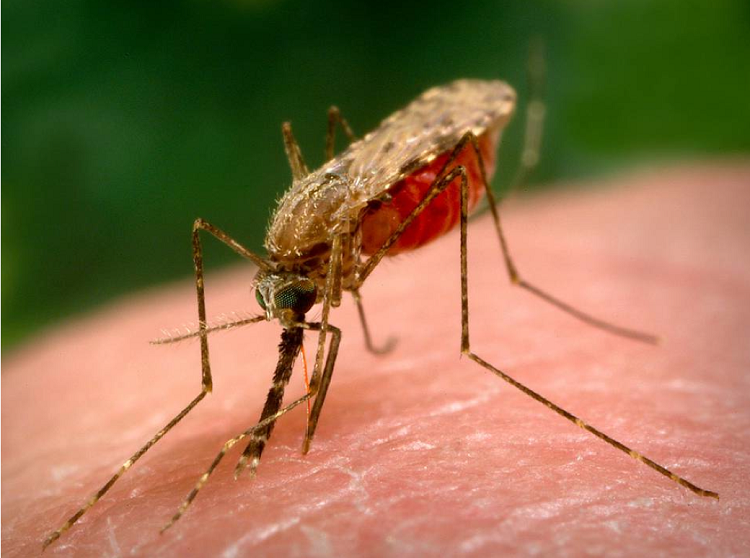To catch a killer, you have to understand it, and know its movements. Malaria is particularly deadly, killing 450,000 people a year, mostly in sub-Saharan Africa. The disease is spread by mosquitoes including Anopheles gambiae. This mosquito usually bites people at night, though its changing habits mean that it is starting to bite people outdoors and earlier in the day, before people are under their insecticide-treated bed nets. To eradicate malaria, we must know more about An. gambiae, in order to develop effective methods of control. A novel study published recently in Scientific Reports shows that bacteria found all over the mosquito contain vital clues about a mosquito’s origins and daily movements.
Behavioural Entomologist at NRI, Richard Hopkins, previously at the Swedish University of Agricultural Sciences (SLU), carried out the research to track down An. gambiae, together with colleagues at SLU and collaborators from Uppsala University in Sweden and the Health Sciences Research Institute (known by its French initials IRSS) in Burkina Faso.
Traditional methods of tracing mosquitoes are known as ‘mark-release-recapture’ experiments, where the mosquitoes are radioactively labelled or marked with fluorescent dye before they are released then recaptured for analysis. However, this technique can be problematic, as Richard explains, “The mosquitoes can be difficult to find, resulting in a low number of caught specimens. When lab-reared mosquitoes are used, they can be weak or behave abnormally.”
On the other hand, the fresh approach carried out by Richard and the team involved catching wild mosquitoes, then analysing their full-body bacteria. As the mosquitoes moved from place to place, they picked up bacteria around them, for example from the flowers, plants or places they visited. By analysing this data, the team was able to put together a faithful snapshot of a day in the life of An. gambiae, including the starting point in their journey.
The Scientific Reports article, entitled ‘Bacterial associations reveal spatial population dynamics in Anopheles gambiae mosquitoes’, tells the full detective story. Olle Terenius, researcher at the Department of Ecology, SLU, says, “We know that bacteria are found everywhere, but were surprised how much they could tell us about the population structure of the mosquitoes. We could even get information about where their mothers came from.”
Olle Terenius believes that this method – using bacteria as proxies for the analysis of population structure and dispersal – has great potential in insect research and says, “Now we have to follow up this finding with further studies both in mosquitoes and other insects in order to understand where it has the greatest potential.”
With over 2,000 reads since publishing, the Scientific Reports article is certainly capturing the attention of the entomology community. Access the full article here to see how this scientific brand of ‘nordic noir’ plans to catch the killer.
Article full citation: Buck M, Nilsson LKJ, Brunius C, Dabiré RK, Hopkins R and Terenius O (2016). Bacterial associations reveal spatial population dynamics in Anopheles gambiae mosquitoes. Scientific Reports 6, Article number: 22806. Doi:10.1038/srep22806 http://www.nature.com/articles/srep22806
Links: Richard Hopkins’ profile | NRI’s Pest Behaviour Research Group | NRI leading project on Aedes aegypti | Department of Ecology, SLU | SLU press release | Uppsala University press release


